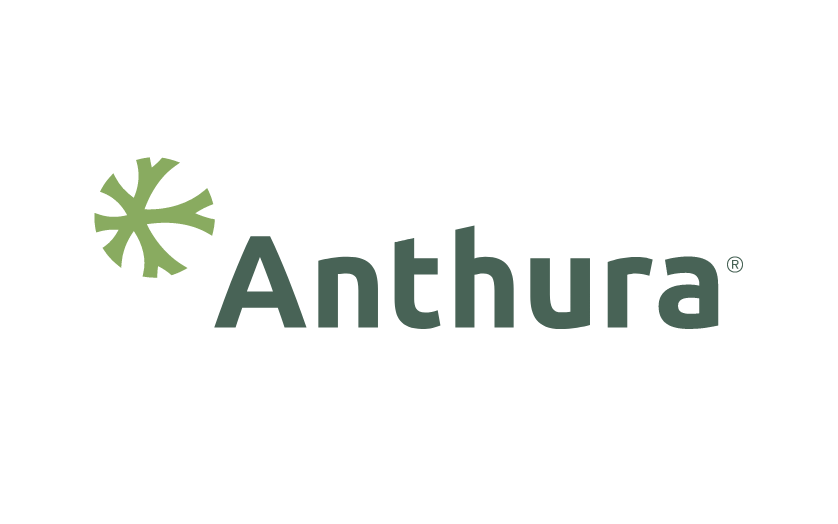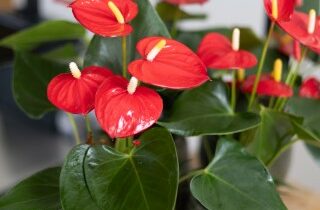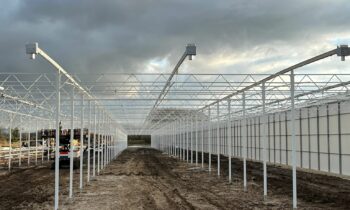Availability of future crop protection products for Phalaenopsis and their alternatives
The use of chemical pesticides in greenhouse farming has been closely scrutinized for some time. The number of available crop protection products has been declining for years and will decrease by another 40% between 2023-2027.
At least that is the objective. The reason for this is the strategic action plan within the European “Green Deal” to achieve climate neutrality by 2050. To this end, the EU wants to transform the food system into a sustainable model. This action plan is known by the term “Farm to Fork.” Although it is about sustainable food production, the same measures apply to ornamental crops and hence Phalaenopsis cultivation. Unfortunately, it must be concluded that the development of alternative crop protection products (chemical and biological) cannot keep up with the resistance development of pests and diseases, and the elimination of agents actually reinforces the development of this resistance.
In Phalaenopsis cultivation, there are a number of diseases and pests that could all be reasonably well controlled in the past with authorized crop protection products. With the removal of these products in recent years, this has become more and more difficult and now the number of bottlenecks has increased significantly as a result. Whereas in the past pot worm was the only difficult problem to control, today Fusarium and thrips have also become problematic. This is due to the recent elimination of agents that effectively control these pests and diseases. What remains are biological solutions that only work partially or require very sophisticated application techniques. In addition, the authorization policy for biologicals is complex, so new authorizations take a very long time.
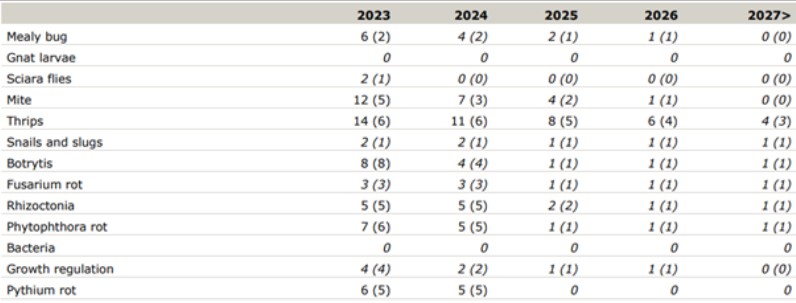
Number of active substances available and based on the expiration date of the product authorizations.
The table above shows the number of active agents available at present and in the coming years based on the expiration date of the agents’ authorization. These authorizations apply to the cultivation of Phalaenopsis for the control of known diseases and pests in the Netherlands. This situation is similar for countries in Europe outside the Netherlands. There is a very high risk that the agents will disappear if the manufacturer fails or if it is not cost-effective to renew the authorization.
Major challenges
As mentioned earlier, the main diseases and pests in Phalaenopsis are the pot worm (Lyprauta), Fusarium (F. solani and F. oxysporum) and thrips – mainly the Vanda thrips (Dichromothrips corbetti) and to a lesser extent the Orchid thrips (Chaetanaphothrips orchidii).
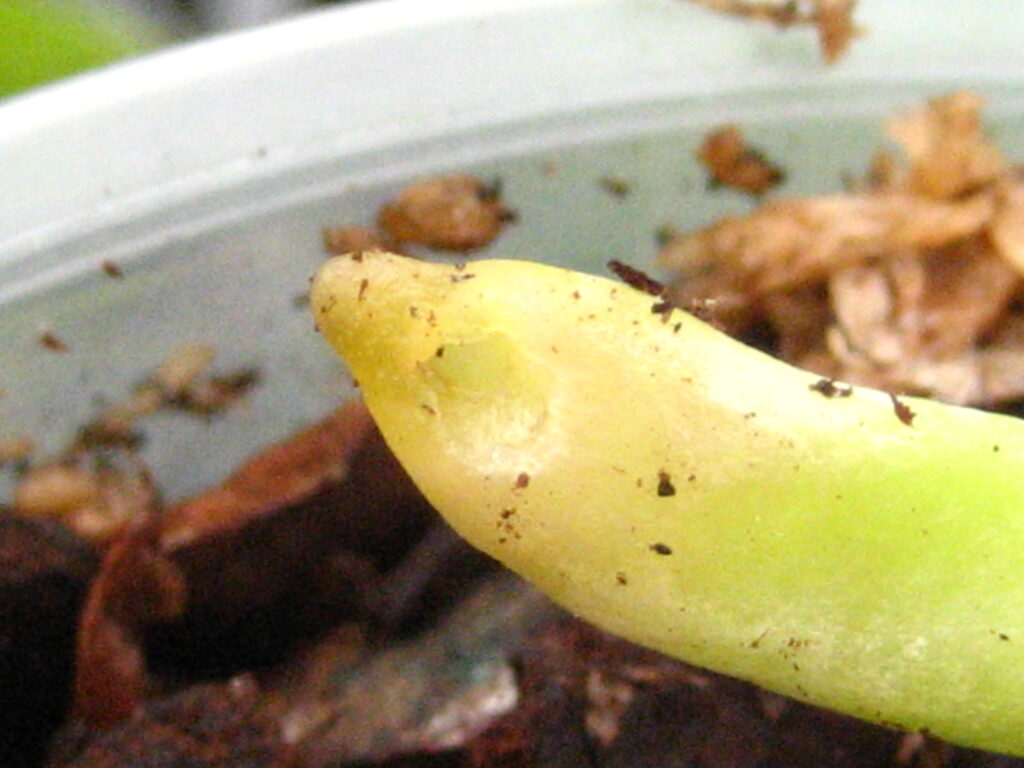
Damage to the root caused by rootworm.
Potworm
Chemical and biological control of pot worm is not possible. The licences of those agents that were effective in the past have all been withdrawn and biological alternatives do not exist to date.
Since 2020, growers have started covering plants with mesh to make it almost impossible for mosquitoes to deposit their eggs in the substrate. And with success: pot worm problems diminish to a great extent after the plants are covered in the first growing phase. Although not all growers are rid of the problems, the issue is now reasonably manageable.
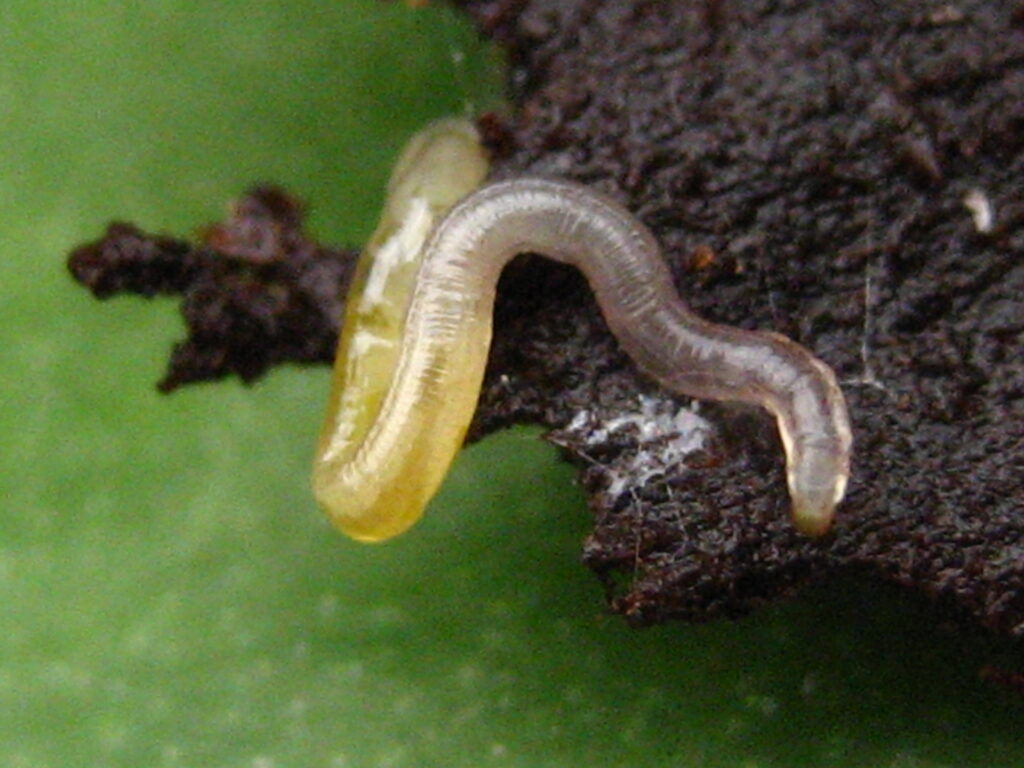
Potworm larva
Furthermore, relatively dry cultivation, stimulating evaporation and using a pot with an open structure and a relatively coarse substrate are good measures to control pot worm.
Fusarium
In many crops, loss due to Fusarium is a major problem. With the withdrawal of Topsin in 2021 and, much more recently, Sporgon in the middle of this year, there are no more chemical agents available to control the fungus. Biological agents hardly work or can have adverse side effects, such as proliferation in the pot when no or few other fungi are present in the substrate.
In terms of prevention, a lot can be accomplished. Fusarium is primarily a weakness parasite that multiplies and develops easily under humid conditions. Hygiene is also very important. So with this knowledge, it helps to keep the greenhouse climate active and not too humid (RH<75%) and make sure the plants are not stressed by external factors such as a high temperature, too much light etc. that can weaken the plants.
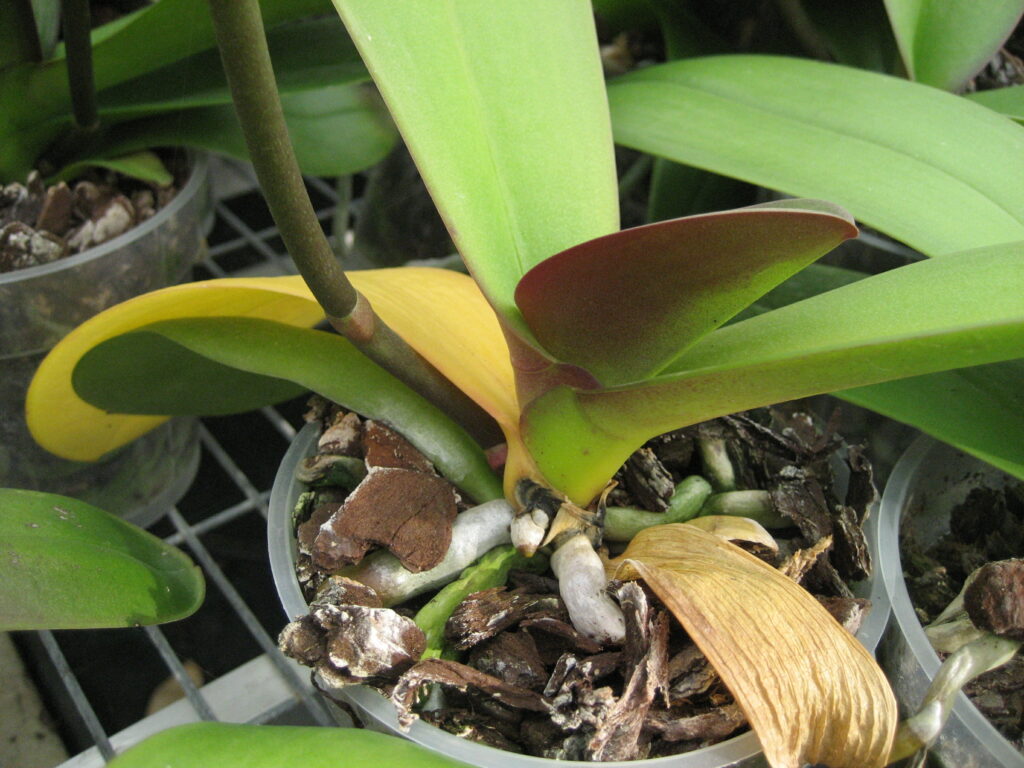
Plant with a Fusarium infection.
In short:
- Provide well-balanced nutrition with not too much nitrogen to ensure the plant structure is strong and the plants do not grow too lush. A nitrogen-potassium ratio of 4 is the maximum value in this respect;
- Provide a stable climate with few fluctuations and peaks in temperature, light and moisture. Saving energy is very important in this day and age, but don’t strive for that last percent of energy savings;
- Ensure a good root system by properly coordinating watering and rate of desiccation to stimulate root activity. Watering too much and/or too early can cause root reduction and keep the substrate wet for too long. The latter allows Fusarium to develop more easily;
- Irrigation pipes should be free of what is known as “biofilm” where Fusarium can develop and spread. Start with clean water and use a disinfectant in the water such as hydrogen peroxide to keep the pipes clean;
- Start clean when potting and scout regularly for sick plants to pick out any slow growing and/or diseased plants. This will contain spore formation.
Thrips
For a few years now, thrips has been an increasing problem in Phalaenopsis. In the growing phase, the thrips can be found in the heart of the plant where they suck on the youngest leaves, which are mostly still within the flower stem of the plant at that time. At a later stage, when the branches grow out, the buds are pricked and as the buds continue to develop, eggs are deposited in the buds. Infested plants can no longer be sold due to the extreme damage caused to the flowers.
In young plants, it is still relatively easy to clean up thrips with a chemical spray. The spray liquid enters the heart of the plants, exactly where the larvae are. When the buds and flowers are affected, it is a whole lot harder to target the thrips and thus make the spraying successful.
In practice, predatory mites are used for preventive control. Transeius montdorensis is often used for this purpose better known by the shorter name Montdorensis. After potting, the mites are spread.
Scouting and early control are very important to stay ahead of bigger problems. Use sticky traps and pheromone traps. The moment thrips occur in flowering, it is likely that they will hide in the greenhouse during the winter months and become a recurring problem every spring. Therefore, hygiene is very important. The installation of insect netting can help a lot to reduce pest pressure in the greenhouse.
Using mesh nets against pot worm makes it more difficult to scout. This applies to all diseases and pests, of course, but with thrips in particular, there is a very good chance that a substantial outbreak can develop because an incipient infestation goes undetected. Covering the plants with netting makes renewed scattering of predatory mites impossible.
